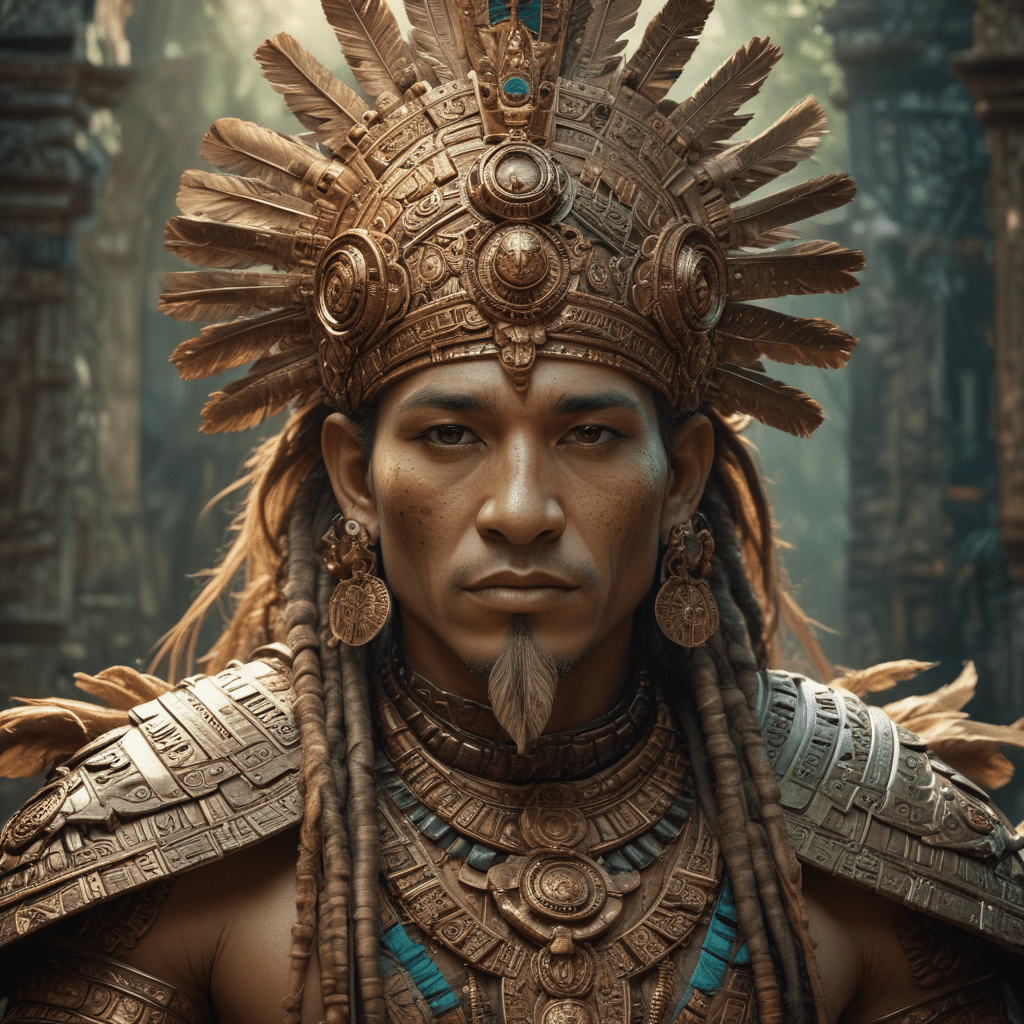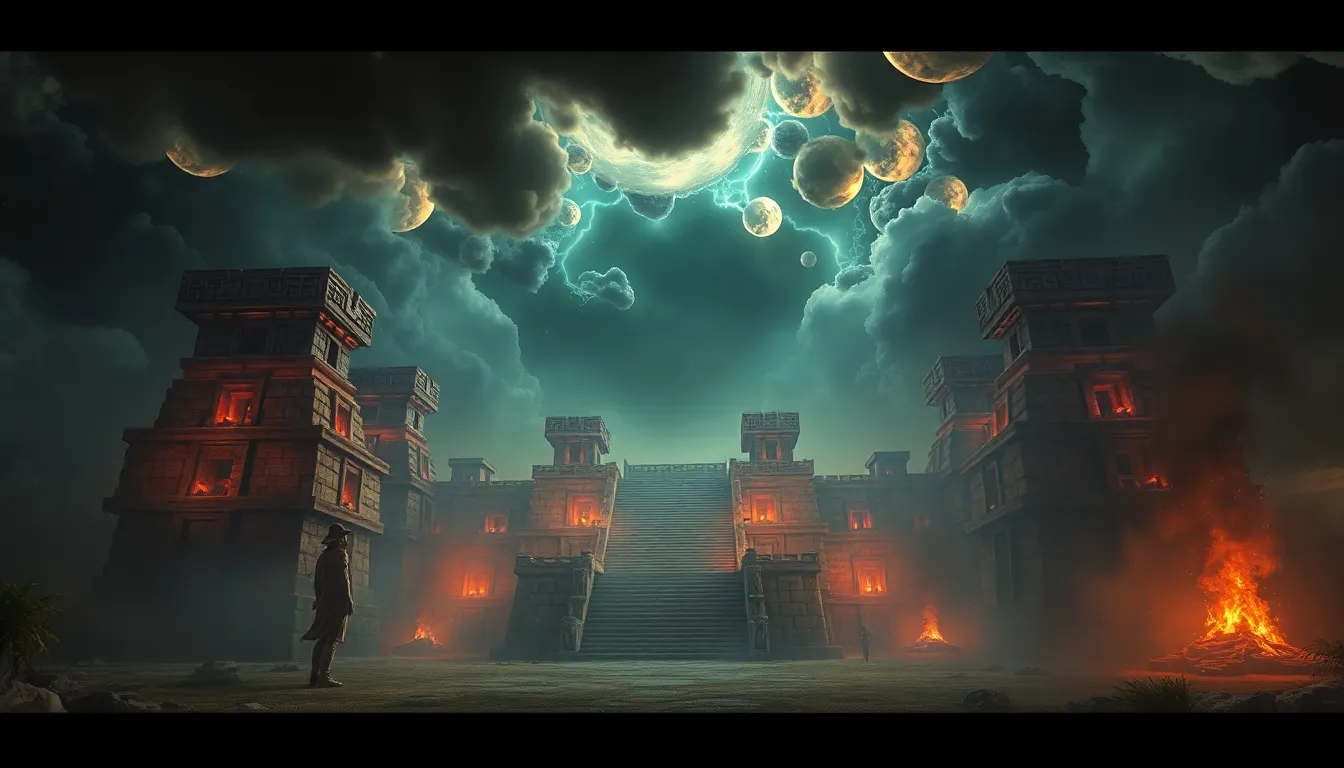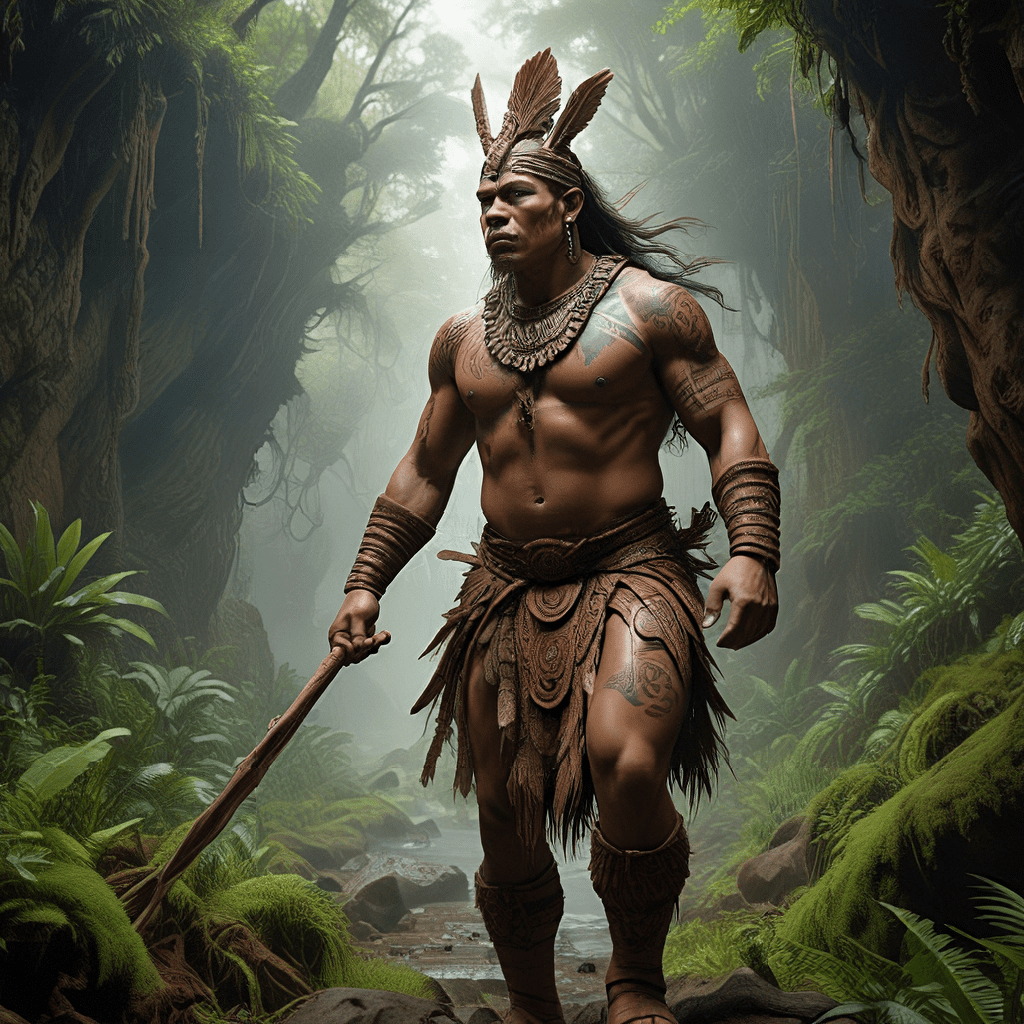The Sacred Kingship
The ancient Maya civilization, renowned for its intricate calendar system, sophisticated architecture, and advanced mathematics, also held a profound belief in the divinity of kingship. The Mayan kings, known as K'uhul Ajaw or Ajaw, were not merely political rulers but also spiritual figures, believed to be intermediaries between the human and divine realms. This belief in the sacred nature of kingship was deeply embedded in Mayan society, shaping its political, social, and religious structures.
Myths and Legends: The Divine Origins of Mayan Kings
Mayan mythology is replete with stories that legitimize the divine origins of kingship. One prominent myth narrates the descent of the first Mayan kings from the gods themselves. The Popol Vuh, the sacred book of the Quiché Maya, describes how the Hero Twins, Hunahpu and Xbalanque, ascended to the heavens and became the Sun and Moon, establishing a celestial lineage for earthly rulers. Other myths associate the kings with ancestors who emerged from caves, cenotes, or the primordial sea, further reinforcing their connection to the supernatural.
The Role of Kings in Mayan Society: Political and Religious Authority
Mayan kings wielded immense power, encompassing both political and religious authority. As political leaders, they held sway over vast territories, commanding armies, overseeing construction projects, and maintaining trade networks. Their religious authority was equally significant, as they served as intermediaries between the people and the gods, performing rituals, making offerings, and ensuring the continued favor of the divine. The king was responsible for maintaining cosmic order, ensuring the fertility of the land, and the well-being of his subjects.
Insignia of Power: Symbols of Kingship and Divine Authority
Mayan kings adorned themselves with elaborate insignia that symbolized their power and divine status. These included elaborate headdresses adorned with feathers and jewels, royal scepters, and intricately carved jade masks. The kings also engaged in ritual bloodletting, piercing their tongues or ears and offering the blood to the gods. These acts served as a display of their connection to the supernatural and their willingness to sacrifice for the well-being of their people.
Royal Palaces and Cities: Centers of Power and Ritual
Mayan cities were designed to reflect the grandeur and authority of the kings. Royal palaces, towering pyramids, and meticulously planned plazas served as both administrative centers and sites of religious rituals. The architecture and iconography of these structures reinforced the divine status of the king, depicting him as a powerful and benevolent ruler chosen by the gods. These monumental constructions continue to stand as testaments to the enduring legacy of Mayan kingship.
Conclusion: The Enduring Legacy of Mayan Mythological Kings
The belief in the sacred nature of kingship played a pivotal role in shaping Mayan civilization. It provided a legitimizing framework for political authority, fostered social cohesion, and promoted religious devotion. Though the Mayan civilization eventually declined, the legacy of its mythological kings continues to resonate, offering valuable insights into the complex relationship between power, religion, and society in the ancient world.
The Legacy of Mayan Kings: Historical and Cultural Significance
The legacy of Mayan kings extends far beyond their reign. They left behind a rich cultural heritage that continues to inspire and fascinate people worldwide. Their intricate architecture, sophisticated writing system, and complex calendar are testaments to their intellectual prowess and artistic brilliance. The myths and legends surrounding their divine status have become an integral part of Mayan folklore, providing insights into their beliefs and values.
The historical significance of Mayan kings lies in their role as leaders and shapers of civilization. They oversaw the construction of vast cities, the development of complex social structures, and the flourishing of trade networks. Their political and religious authority helped maintain order and stability within their kingdoms, contributing to the overall prosperity of Mayan society.
Theories of Divine Kingship: Anthropological and Archaeological Perspectives
Anthropologists and archaeologists have long been fascinated by the concept of divine kingship in Mayan society. Various theories have been proposed to explain this phenomenon, each offering unique insights into the relationship between power, religion, and social structure.
One prominent theory suggests that divine kingship served as a legitimizing tool for political authority. By claiming descent from the gods, kings could justify their rule and maintain social order. Another theory posits that divine kingship was a way to ensure the continued favor of the gods, essential for the well-being of the people and the prosperity of the kingdom.
The Relationship Between Kingship and Religion: Divine Authority and Ritual Practice
The relationship between kingship and religion was deeply intertwined in Mayan society. The king was not only a political leader but also the supreme religious authority, responsible for maintaining cosmic order and ensuring the continued favor of the gods. This close connection between the two realms was reflected in elaborate rituals and ceremonies performed by the king, often involving offerings, bloodletting, and invocations to the deities.
The Impact of Kingship on Mayan Civilization: Social, Political, and Economic Development
The institution of kingship had a profound impact on the development of Mayan civilization. It fostered social cohesion, provided a framework for political organization, and promoted economic growth. The kings played a crucial role in unifying different Mayan groups, overseeing large-scale construction projects, and establishing trade networks that facilitated the exchange of goods and ideas.
Conclusion: The Enduring Legacy of Mayan Mythological Kings
The Mayan kings, though long gone, continue to cast a long shadow over our understanding of this remarkable civilization. Their belief in their divine status shaped their political, social, and religious practices, leaving behind a legacy that continues to inspire and intrigue us today. The study of Mayan kingship offers valuable insights into the complex relationship between power, religion, and society in the ancient world, shedding light on the beliefs and values that shaped one of the most fascinating civilizations in human history.
FAQ
- What were the names of some famous Mayan kings?
Some of the most famous Mayan kings include Pacal the Great of Palenque, Yax K’uk’ Mo’ of Copan, and K’inich Janaab’ Pakal of Tikal.
- What were the duties of a Mayan king?
The duties of a Mayan king included overseeing construction projects, maintaining trade networks, performing rituals, and ensuring the continued favor of the gods.
- How did Mayan kings maintain their power?
Mayan kings maintained their power through a combination of political and religious authority. They claimed descent from the gods, legitimizing their rule and ensuring social order. They also performed elaborate rituals and ceremonies, demonstrating their connection to the supernatural and their ability to intercede with the gods on behalf of their people.
- What happened to the Mayan kings?
The Mayan civilization declined around the 9th century AD, and the institution of kingship gradually faded away. The reasons for the decline are complex and debated by scholars, but factors such as environmental change, political instability, and social unrest are believed to have played a role.
- Where can I learn more about Mayan kings?
There are many resources available for learning more about Mayan kings, including books, articles, websites, and museums. Some of the best resources include the following:
- The Popol Vuh, the sacred book of the Quiché Maya, which contains myths and legends about the origins of Mayan kings.
- The writings of Mayanist scholars such as Michael D. Coe, David Freidel, and Linda Schele.
- The websites of the National Geographic Society, the Smithsonian Institution, and the Maya Research Program.
- Museums with significant collections of Mayan artifacts, such as the Metropolitan Museum of Art, the British Museum, and the National Museum of Anthropology in Mexico City.
I hope this additional information is helpful. Please let me know if you have any other questions.



